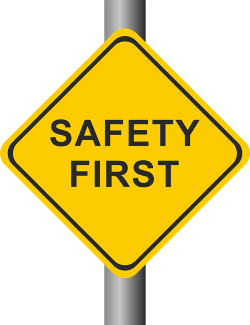Cyber threats are pretty common these days.
According to 2020 ransomware stats:
These findings imply that businesses must adopt a proactive approach and reduce the risk of cyberattacks. Here are seven ways to help you with this.

The number of cyberattacks is increasing, but businesses aren't fast enough to identify and react to malicious activities. In fact, the Cisco Midyear Cybersecurity Report revealed that the industry average for spotting cyber threats is 100-200 days which is quite late.
Look out for these five signs of a cyber attack:
Safe web browsing is an important part of high security. Employees should not click on pop-up windows even if you receive an option to close them. Unknown pop-ups are infected with malware that can help hackers to get an access to your PC.
Usually, employees are locked out of their system in case of a cyber attack. A lot of times, they receive an email stating that a password has been changed which means that the password will be compromised if they don't initiate an action.
Plus, keeping simple passwords is one of the bad habits that are killing your security. A good practice is to create a strong password and update it every six months.
Unofficial malicious emails generally are written with poor spelling, grammar, and a lot of punctuation mistakes. The reason is that most of the emails are sent from cyber attackers living outside the country.
Email phishing is a common technique used by criminals to gain access to sensitive data by sending emails with the name of a trusted website or organization. Clicking on unknown links and opening attachments from unauthorized sources must be avoided.
Plus, employees shouldn't reply to emails sent by unknown senders as a reply validates the email address of the recipient which can lead to continued attacks.
Hacking attempts often lead to high network influx which impacts the internet speed. If employees note a slower than usual network speed, then they should immediately inform the IT security department.
VPN technology encrypts your internet traffic and makes entire of your internet connection hidden from hackers and prying eyes (especiall for public Wi-Fi networks). Even if a potential hacker can get access to the data your sending over the VPN, it’s end-to-end encrypted, meaning they won’t be able to gain anything useful from it. Read here 7 reasons why business should use a VPN.
If you haven't already installed a good antivirus, antispyware, and antimalware software on all the devices, then you are a high risk of cyberattacks. Its high time for you to install, use, and update cybersecurity software on a repeated basis because antivirus software can prevent many types of ransomware.
However, once ransomware takes control of your system, it cant be controlled. This is the reason why ransomware is advanced as compared to traditional viruses.
 An antivirus constantly asks you which websites and programs are safe, tell you about suspicious files, and advice you to don't download files from an authorized email.
An antivirus constantly asks you which websites and programs are safe, tell you about suspicious files, and advice you to don't download files from an authorized email.
Some best practices are:
Preparing for the worst-case scenario is not a choice. It is essential for companies to develop robust continuity and disaster recovery plans. The plan should be tested multiple times, document, printed with a soft copy stored in a safe place.
The highest priority of this plan should be data recovery in the least possible time. It's more like rethinking a disaster recovery plan.
Here's a short guide to building an effective ransomware recovery plan:
How should businesses reduce the risk of ransomware attacks? The first and foremost thing that people should understand that there is a high possibility that someone is preparing an attack against us.
It is recommended that victims should immediately file a report to higher authorities.
The American electrical vehicle company 'Tesla' thwarted a series ransomware attack because of reporting a malicious activity on time. The CEO Elon Musk mentioned in a Tweet that 27-year-old guy from Russia tried to convince an insider for installing ransomware in exchange of a million-dollar payment.
The only long term and reliable solution to prevent cyber intrusions are to locate and punish attackers. If you report such attacks, a team of expert certified professionals work on your case.
Some time ago, a well-know online personal statement writing service deal with sensitive customer data and might agree to pay, but they shouldn't. Paying perpetrators doesn't guarantee complete data back. In fact, payment for engaging in illegal activity, encouraging them to target more victims.
The ability of a business to prepare, react, and recover in the event of a cyberattack is known as cyber resilience. If an organization defend itself against cyber perpetrators, reduce the effects of a security breach incident, and ensure operation continuity, it has cyber resilience.
If the financial health of your company is good, then don't hesitate from investing in good security software. Even the highly trained employees can fall victim to clearly-crafted phishing emails because cyber attackers are constantly refining their tricks, such as sending emails from legitimate domains.
It is highly critical for businesses to identify which people should have access to important organizational information and data. Limiting access to the systems is one important strategy to prevent the risk of ransomware attacks.
Make sure that people with authority can access sensitive data. The access rights should be reviewed regularly and must be revoked if an employee is reassigned with new duties or terminated from the job. Less access means less vulnerability to data breaches.
Continuous employee cybersecurity awareness about doing business in an interconnected world is essential. Every individual must know the mechanics of the attacks and the possible ways in which they can be tricked by hackers. When they know the deep details, they'll be able to spot and attack immediately.
Moreover, the chances of a positive outcome will be practically zero if insiders collaborate with criminals. Usually, hackers try to target unhappy employees through LinkedIn and try to figure out if they are seeking other job opportunities.
Business owners must clearly articulate that partnering with attackers will not be assumed as a mistake or act of ignorance as in most cases, and the offer involved money in exchange which is a criminal behaviour purely.
The best way to reduce the risk of ransomware attacks is to stop it before it infects our devices and systems. Adopting a proactive approach is still the best defense. All of these measures and upgrading your system, are essential to combat the known versions of ransomware.
Since we can't predict what future holds for us, all we can do is protect ourselves by ensuring safe surfing practices.
Author's Bio:
Samantha Kaylee is an Assistant Editor at Crowd Writer, a reliable academic writing solution provider. She has been helping small and medium start-ups to prevent cyber threats by increasing awareness through her write-ups. In her free time, she likes to socialize with her friends and relatives.